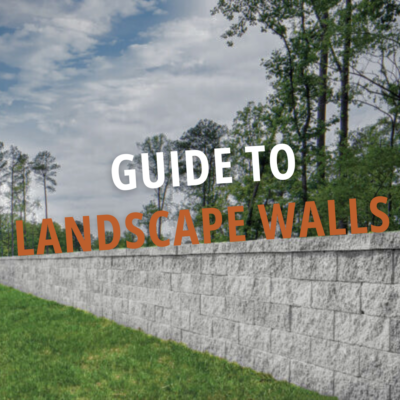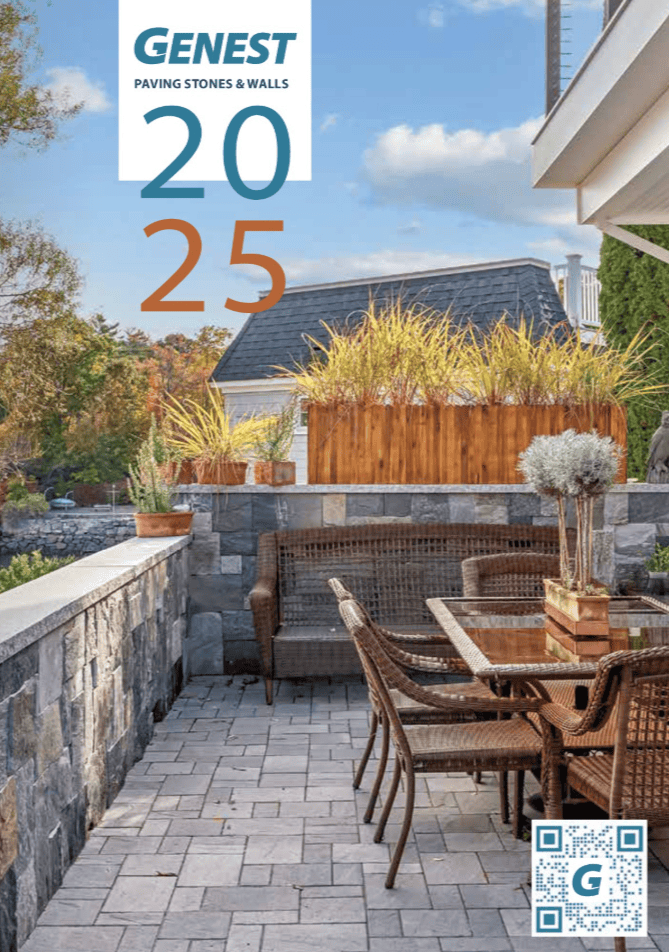Landscape walls are a lesson in thinking outside the box—walls are not just for the perimeter of your property but are essential for guiding the contour of the landscape, preventing soil erosion, managing grade changes, and defining functional spaces within your yard. If your home is set on a hill, retaining walls are key for sloped yard landscaping that protects your lawn and garden, allows for proper drainage and gives you more usable space. Conversely, in large open yards, freestanding walls divide garden from patio, outdoor dining, lawn, and more to create aesthetically dynamic and useful spaces. The right wall can dramatically enhance the functionality and beauty of your outdoor areas. In this blog, we’ll explore how integrating both retaining walls and freestanding walls into your landscape can solve common challenges and elevate your outdoor living space.
What is a Segmental Wall?
Segmental landscape walls consist of manufactured, concrete retaining wall blocks stacked to construct either structural or decorative walls. They are dry stacked (without mortar) and rely on interlocking design, unit to unit friction, and collective mass to create stability. In some cases, segmental retaining walls are reinforced with horizontal soil layers to increase mass. Segmental systems offer vast design flexibility with a variety of finishes and the ability to create curves, corners, and more. They are cost effective, requiring less heavy machinery than cast-in-place retaining walls and no formwork. And unlike rigid retaining walls, the units can adjust with changes in temperature and moisture, meaning fewer signs of distress like cracking. This makes segmental walls one of the most common and favored systems in modern landscaping.
2 Types of Landscape Walls
When we talk about walls in residential landscape design, we’re typically discussing either retaining or freestanding walls. Many yards feature both and they share the use of segmental systems for their construction. But their key difference lies in their function for your outdoor space.
What is a Retaining Wall?
A retaining wall is engineered to restrain soil to a slope that it would not naturally keep to. It is essential in preventing erosion, managing water runoff, and creating flat spaces from sloped surfaces—making it possible to have usable garden beds, patios, or even lawns on uneven terrain.
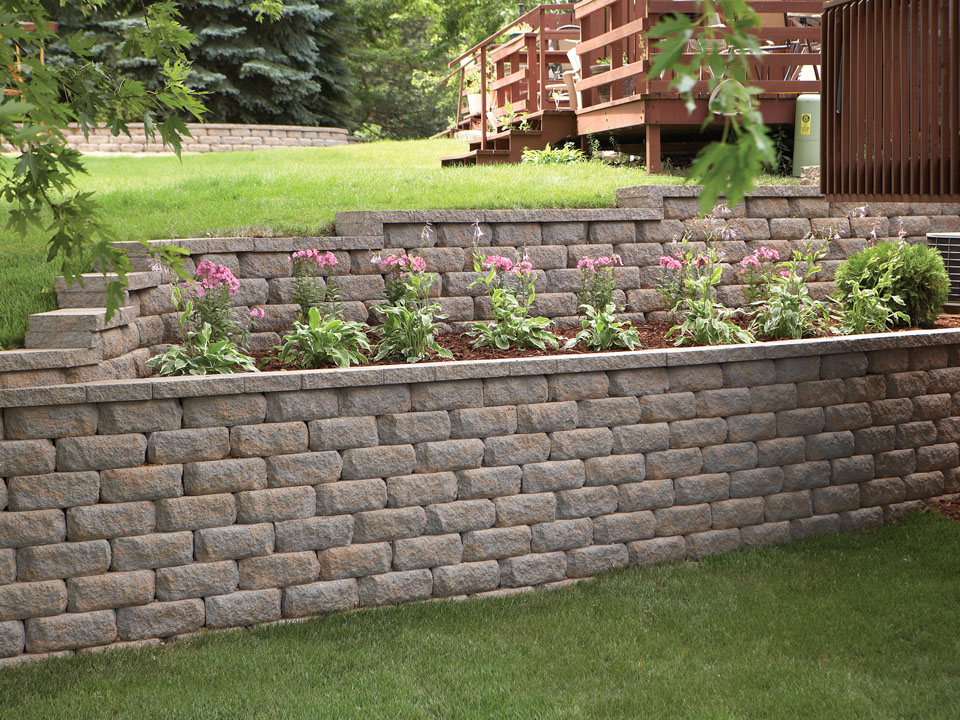
Retaining walls prove their worth in residential settings where steep slopes would otherwise render space unusable. If your patio furniture can’t sit upright in your yard or your freshly laid grass seed just washes away, a sloped backyard makeover may be in order. By implementing a retaining wall design, homeowners can transform a challenging landscape into a series of terraces or leveled areas that significantly increase the usability of their property.
Due to the significant load they support, retaining walls require meticulous planning and precise construction to ensure stability and longevity. Depending on height and application, some retaining walls must be designed by a licensed engineer. Homeowners should always work with professional contractors who specialize in retaining wall installation to guarantee that these structures not only perform their intended function but do so safely and effectively.
Genest offers a number of retaining wall blocks such as the Diamond and Diamond Pro series, Highland Stone, and our newest Sterling Wall System so you can select a color, texture, and shape to best meet your personal style. We always recommend visiting a Genest store in person to view your options face to face.
What is a Freestanding Wall?
Freestanding walls serve as decorative elements in a landscape, providing structure and definition without retaining soil. These walls are versatile additions to any outdoor space, ideal for delineating areas like outdoor kitchens, seating areas, or garden perimeters. Beyond defining different zones of your yard, they also enhance the landscape’s visual appeal and can even be used as additional seating.
Freestanding walls contribute to a neat, organized outdoor environment, helping to separate and frame various sections of a garden or yard. Depending on the desired thickness of your freestanding wall, look for wall blocks that are double sided like those in the Sterling Wall System to ensure both sides meet your aesthetic vision.
Evaluating your landscape’s specific needs will help you determine whether a retaining wall, a freestanding wall, or a combination of both is necessary. If your yard features uneven terrain or slopes, a retaining wall will be crucial for creating level, usable areas. For flat landscapes, freestanding walls can add character and definition to otherwise open spaces.
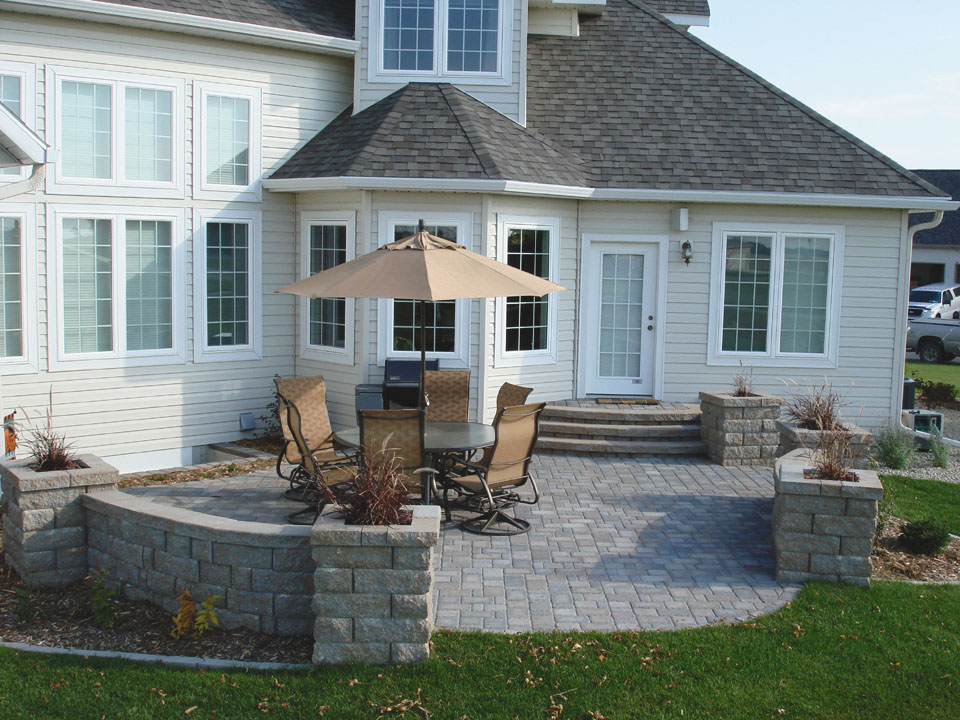
The Sterling™ Wall System: Versatile for Both Retaining and Freestanding Walls
The Sterling™ Wall System, crafted under the Anchor Diamond Wall Systems license, is an innovative wall system uniquely designed for both retaining wall and freestanding wall applications. Its versatility allows homeowners to use a single product throughout their landscape for various needs, ensuring a uniform look with high functionality. This simplifies purchasing and installation, fulfilling both structural and decorative roles.
Available in multiple color blends, it features a distinct “straight split” texture with a uniformly shaped face and rough-hewn texture that can complement any home style. Whether your taste leans towards the contemporary or you prefer a more traditional look, these walls enhance the visual appeal of your outdoor spaces.
If you’re a contractor interested in learning more about the new Sterling Wall System, don’t miss Anchor Diamond’s featured presentation at Genest Bootcamp 2025, covering technical specifications and installation guidelines. Learn more or register now for our 13th Annual event for contractors, February 4th 2025 in South Portland, ME and February 6th 2025 in Eliot/Kittery, ME. Space is limited and we expect to reach capacity so don’t wait to reserve your spot for a great day of networking, live demonstrations, and product discovery.
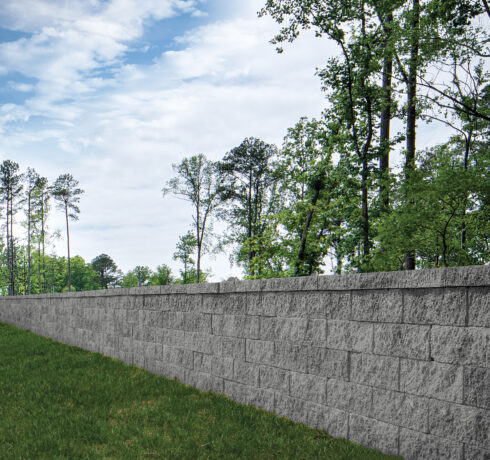
Leave Retaining Wall Installation to The Professionals
Given the complexity of properly installing a retaining wall that securely holds back soil, professional installation is crucial. Partnering with an experienced contractor ensures that your wall is not only aesthetically pleasing but also structurally sound. For those interested in utilizing the Sterling™ Wall System, Genest can connect you with skilled professionals who will walk you through the retaining wall design process and bring your vision to life. Visit one of our retail centers in Windham, Biddeford, or Sanford to see the Sterling Wall System on display, and coordinate additional landscaping and masonry supplies to complete your project.

